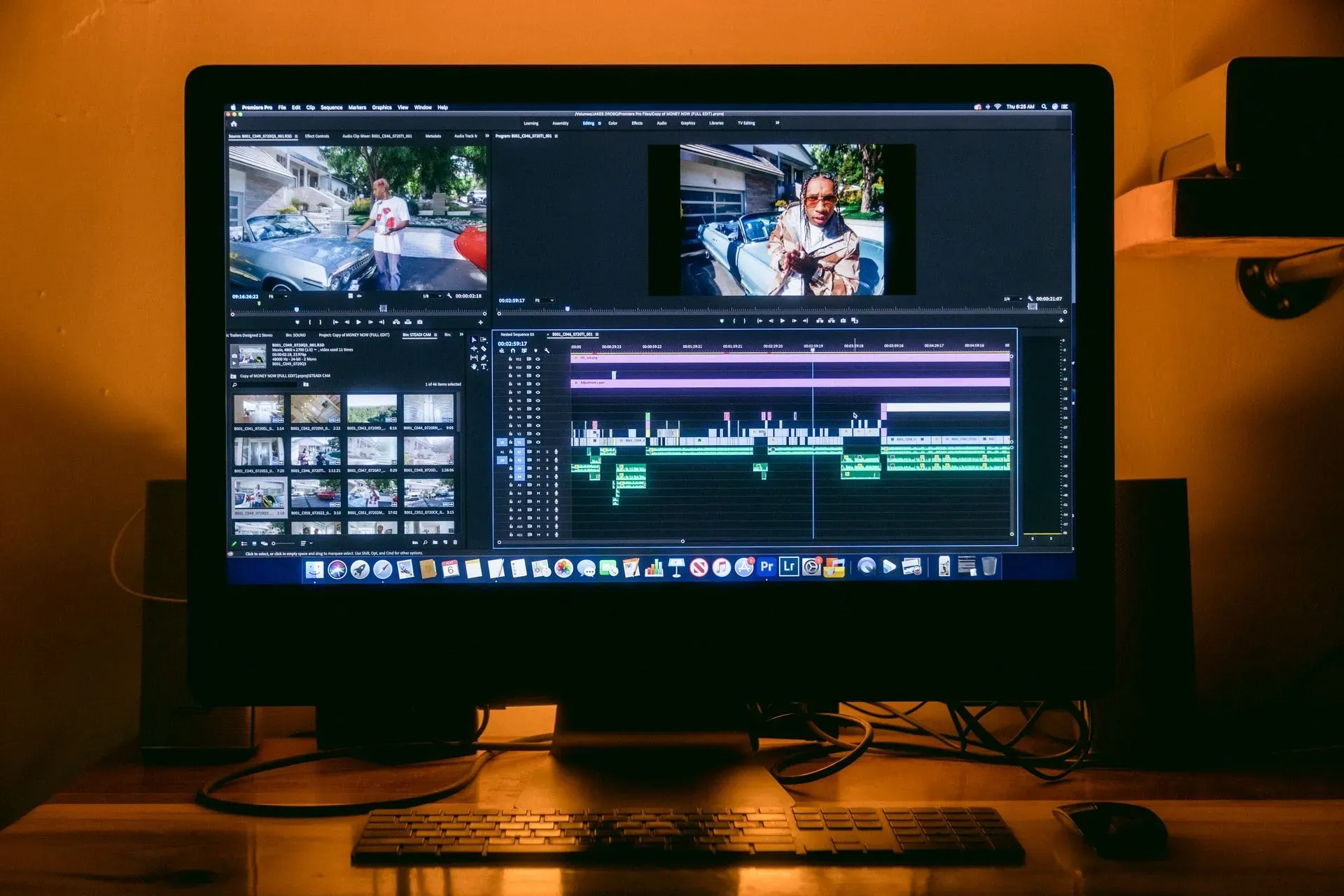Adobe Premiere Pro vs. After Effects: Which is better?
What's the difference between Adobe Premiere Pro and Adobe After Effects, and when should you use which software? Let's get into the nitty-gritty of Adobe's two frontrunner post-production apps.

Choosing your video editing software is an integral part of the post-production process. Let's get into the nitty-gritty of Adobe's frontrunner post-production apps.
Yep, it’s time to discuss Adobe Premiere Pro vs. After Effects. Which is better? You can use both tools for various video production tasks, but each has its specialty. If you’re a beginner, it can be tough to choose between them.
Which is better: After Effects or Premiere Pro?
So, what’s the difference between Premiere Pro and After Effects? The former is a video editing tool, while the latter was built with visual effects in mind. Each comes with a specialty, and some people exclusively use one over the other. Sometimes, it comes down to personal preference – if you're familiar with one program, you’re more likely to use it if it accomplishes the task.
But let’s break this down and discuss the benefits of each tool, who wins when it comes down to Premiere Pro vs. After Effects, and the best way to get started!

What is After Effects used for?
After Effects specializes in digital motion graphics, covering everything from simple animations to complex, high-end graphic sequences. Motion graphics, special effects, text effects – you name it. Due to the nature of these features, most of the work that people do in After Effects is post-production.
It also boasts a non-destructive, non-linear workspace. This means any changes you make to a piece of content won’t affect the source file, so you can pile on a bunch of effects without worrying about ruining the original content.
That’s not to say you can’t edit videos, as After Effects does have basic editing functionality. But many would find the system slow, especially as it lacks the simple timeline features that Premiere Pro offers. In this case, using After Effects alongside Premiere Pro would make a more fluid video production workflow.
What is Premiere Pro used for?
Adobe Premiere Pro is a video editing program widely regarded as one of – if not the – best in class. It features a simple timeline with multiple videos and audio channels; like After Effects, it’s non-linear and non-destructive.
Premiere Pro makes video editing easy with functionality like clipping, click & drag positioning, and easy-to-add transitions or titles. You can add video effects with Premiere Pro, making it ideal for beginners. However, After Effects is a much better tool for that type of work. Premiere Pro takes a bit of time to figure out entirely, but once you do, you’ll soon wonder how you lived without it.
If you're looking for some killer tracks or sound effects to slot into your video edits, we've got a massive catalog for you to choose from. 40,000 tracks and 90,000 sound effects, to be precise. Check them out below.

5 things After Effects does better than Premiere Pro
- Adobe After Effects is one of the best programs out there for animators. Rotoscoping using After Effects can make literal cartoons with the software – you can't really do this with Premiere Pro.
- Suppose you want to add visual effects such as outlines, explosions, movement tracking, or something like that. After Effects is the clear winner. That's because it was designed with this kind of work in mind. You can create the impossible!
- Both After Effects and Premiere Pro can perform video masking. However, After Effects allows more in the way of precision, control, and tools to do it frame-by-frame, resulting in a much smoother look.
- You can achieve color correction in both Premiere Pro and After Effects. This has been a staple feature in After Effects forever, whereas Premiere Pro introduced color correction much later. The legacy of being part of After Effects means it’s generally better – but that gap is closing.
- Text Animating is rather basic in Premiere Pro, but incredibly robust in After Effects. The program gives you freedom to control and animate every single element of a piece of text.

5 things Premiere Pro does better than After Effects
- So, would you use Premiere Pro or After Effects for video editing? Premiere Pro, hands down. The entire program is designed with video editing in mind. If you know how to use Adobe After Effects, you’ll master Premiere Pro quickly. This alone is a compelling reason to learn how to use it.
- Adobe Premiere Pro is much easier to pick up than After Effects. It has an intuitive and easy-to-understand layout, so it's ideal for beginners. Even though industry professionals use the program, they still swear by Premiere Pro's simple drag-and-drop video timeline. Sometimes less is more!
- Premiere Pro makes it less time-consuming to render video than After Effects. That’s because it doesn’t need to process intensive frame-by-frame effects, meaning it'll speed up your workflow when creating videos.
- Premiere has basic transitions, effects, and color grading options built-in. However, if you aren’t well-versed in color grading or adding transitions between scenes, the stock options that come with Premiere Pro are great for beginners.
- Adobe offers a standalone audio editing program called Audition, but modifying sound within Premiere Pro is extensive. You can control the volume independently on each channel, add effects, and much more. After Effects can't even compete here.
Adobe Premiere Pro vs After Effects – which is best for beginners?
If you’re just getting started in video production, you should go for Premiere Pro. It’s a professional tool that's easy to figure out as a beginner – you can make mistakes, find shortcuts, and build your confidence at your own pace. There are endless tutorials and support forums online, which can help you navigate any problems you encounter. In addition, it offers lots of features that will help you rapidly improve the quality of your videos.
Best of all, the skills you learn in Premiere Pro will often apply to using After Effects, if you decide to try that later. Because at the end of the day, they’re two very different beasts: Premiere Pro is in the business of assembling assets, whereas After Effects is hotter on asset generation. Both tools are excellent, but if the question is purely Adobe Premiere Pro vs. After Effects, then Premiere Pro is the go-to for beginners. They also work intuitively with one another, alongside the rest of the Adobe suite. Once you get the hang of both, they work best when complementing one another.
Whether you've sworn to Premiere Pro for life or decided to figure out how to use After Effects, you'll probably need some music to make your final cut stand out. Licensing music and obtaining the correct rights can be tricky business – you don’t need the hassle. You need Epidemic Sound.
Our catalog is high-quality, affordable, and safe. An Epidemic Sound subscription goes beyond royalty-free music, removing the headache of licensing and freeing you up to do what you do best. You can enjoy the safety of our license hand-in-hand with our massive catalog of 40,000 tracks, covering just about every genre you can think of. You’ll also gain unlimited access to our advanced search functions — finding the right sound’s never been easier.
It’s better than royalty-free. It’s worry-free. Get started with Epidemic Sound below.

Are you a video editor or filmmaker? Whether you’re an absolute master or just a beginner, discover what Epidemic Sound has to offer on our Epidemic Sound for Filmmaking page. Oh, and if you’re looking for some background music for your videos, we got you covered.
Related posts:

